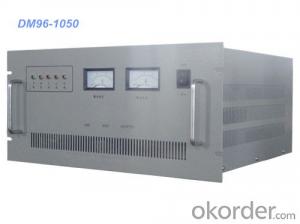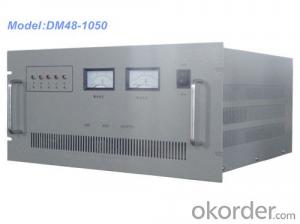5kva Mppt Solar Inverter
5kva Mppt Solar Inverter Related Searches
Best Solar Inverter For Rv Mini Solar Inverter For Home Solar Inverter Cost For Home Inverter For Home Solar Cover For Solar Inverter Solar Battery For Inverter Wifi Device For Solar Inverter Inverter For Off Grid Solar Hs Code For Solar Inverter Canopy For Solar InverterHot Searches
Type Of Inverter For Solar Types Of Inverter For Solar Used Solar Inverter For Sale Inverter Size For Solar System Solar Edge Inverter For Sale 5kw Solar Inverter For Sale Solar Inverter For Sale Solar Inverter For Battery Solar Inverter For Split Ac Solar Inverter For Laptop Solar Inverter For Fridge Solar With Inverter Price Solar Inverter With 2 Battery Solar Inverter With Ac Outlet Solar Inverter Price In China Best Solar Inverter In China Solar Inverter Price In Dubai Solar Inverter Price In Uae Solar Inverter Price In Kenya Solar With Inverter Price5kva Mppt Solar Inverter Supplier & Manufacturer from China
Okorder.com is a professional 5kva Mppt Solar Inverter supplier & manufacturer, offers integrated one-stop services including real-time quoting and online cargo tracking. We are funded by CNBM Group, a Fortune 500 enterprise and the largest 5kva Mppt Solar Inverter firm in China.Hot Products
FAQ
- Yes, a solar inverter can be used with solar-powered recreational vehicles (RVs). A solar inverter converts the DC (direct current) energy generated by solar panels into AC (alternating current) energy that can be used to power various appliances and devices in an RV. This allows RV owners to utilize solar energy for their electrical needs while on the road.
- A solar inverter handles islanding detection by constantly monitoring the electrical grid. If it detects that the grid has been disconnected, it initiates a process to disconnect itself from the grid to prevent an islanding event. This is typically done through the use of advanced algorithms and protective mechanisms to ensure the safety and stability of the electrical system.
- Yes, a solar inverter can be connected to a computer or smartphone. Many modern solar inverters are equipped with built-in Wi-Fi or Bluetooth capabilities, allowing them to connect to local networks. This enables users to monitor and control their solar system's performance and settings conveniently through dedicated software applications or web interfaces on their computers or smartphones.
- The role of a solar inverter in a utility-scale system is to convert the direct current (DC) electricity produced by the solar panels into alternating current (AC) electricity that can be used by the electrical grid. It ensures the compatibility between the solar power generated and the grid's requirements, including voltage, frequency, and power quality. Additionally, solar inverters often have monitoring and control functions, allowing for remote monitoring and optimization of the system's performance.
- The role of a maximum power point tracker (MPPT) in a solar inverter is to optimize the efficiency and power output of a solar panel system. Solar panels generate direct current (DC) electricity, but most appliances and the electrical grid operate on alternating current (AC). The MPPT is responsible for continuously adjusting the operating conditions of the solar panels to extract the maximum power available from the sunlight. It tracks the maximum power point (MPP) at which the solar panels can generate the most electricity efficiently. This is important because the output of a solar panel is highly dependent on factors such as temperature, shading, and the angle of the sun. By continuously monitoring and adjusting the voltage and current of the solar panel system, the MPPT ensures that the solar panels are always operating at the MPP, maximizing the power output. It achieves this by dynamically changing the electrical load on the solar panels to find the optimal operating point. The MPPT also acts as a converter, transforming the DC power generated by the solar panels into the AC power required for use by appliances or for feeding back into the electrical grid. This conversion process involves transforming the voltage and frequency of the electricity to match the requirements of the appliances or the grid. Overall, the role of a maximum power point tracker in a solar inverter is to optimize the efficiency and power output of the solar panel system, ensuring that the maximum amount of energy is harnessed from the sunlight and effectively utilized for various applications.
- The common troubleshooting steps for a malfunctioning solar inverter include checking the display for error messages, inspecting the DC and AC connections for loose or damaged wires, verifying the input voltage and frequency, resetting the inverter, and monitoring the system for any unusual behavior. If these steps do not resolve the issue, it is advisable to consult a professional or contact the manufacturer for further assistance.
- PV grid-connected inverter can directly load it?
- Converter is the AC voltage of the grid into a stable 12V DC output, and the inverter is the AC output of the 12V DC voltage into high-frequency high-voltage alternating current; two parts are also used with more pulse width
- The role of a solar inverter in preventing system failures is to convert the direct current (DC) produced by solar panels into alternating current (AC) that can be used by household appliances and sent back to the electrical grid. By ensuring that the DC power generated by the solar panels is properly converted and synchronized with the grid, the inverter helps maintain the stability and reliability of the entire solar power system. Additionally, the inverter monitors the voltage, frequency, and overall performance of the system, allowing it to detect and respond to any potential issues or faults that could lead to system failures.









































